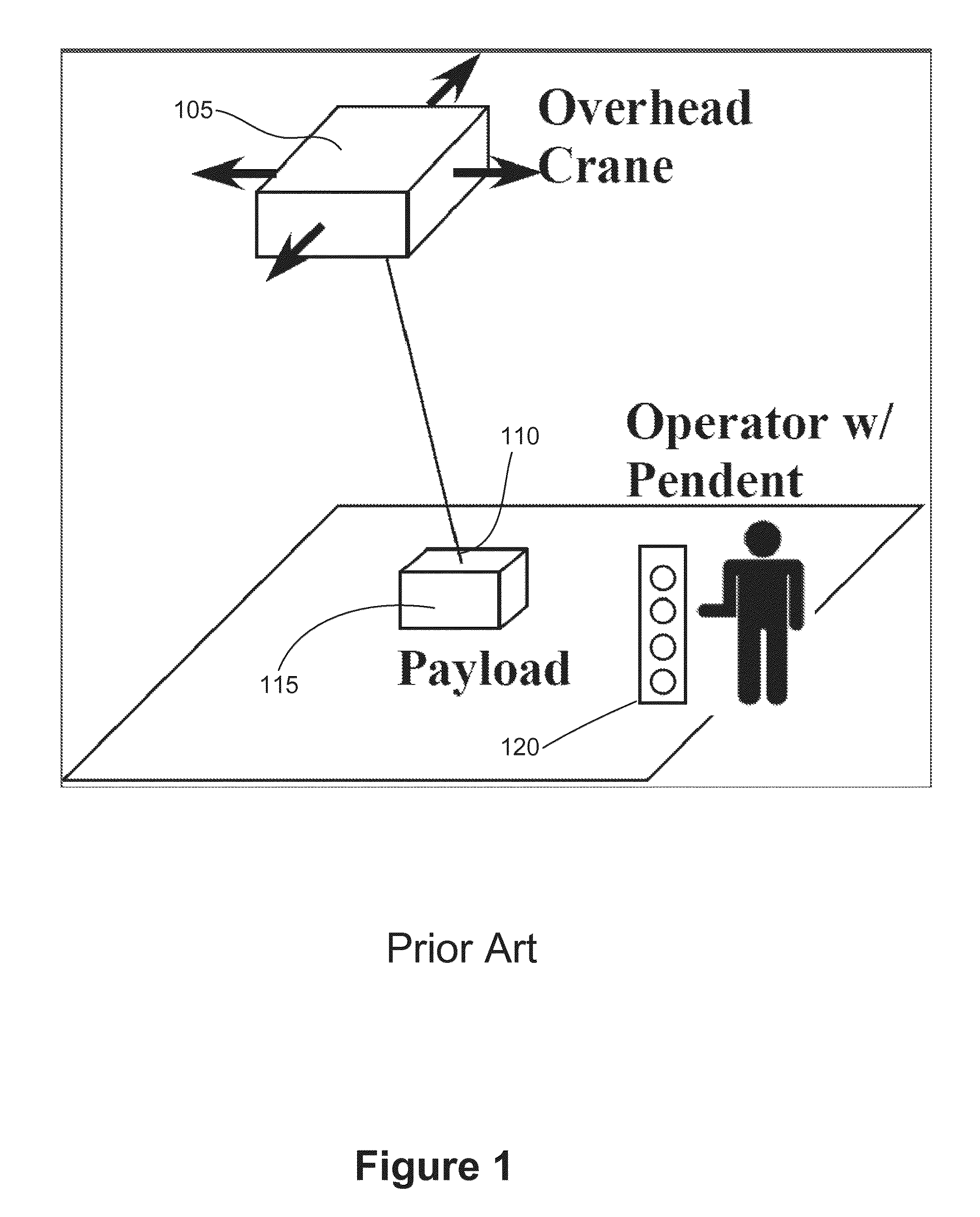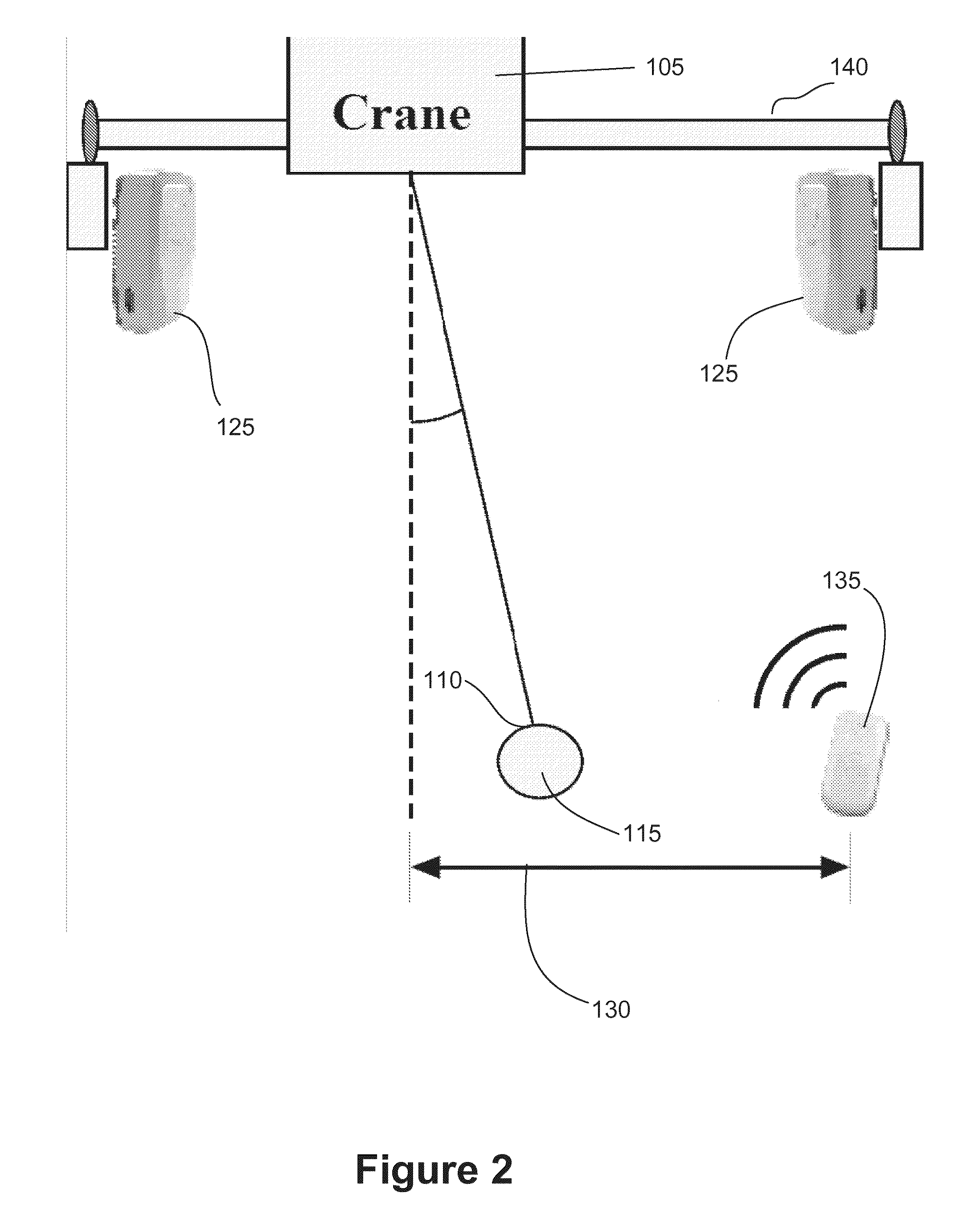Crane control systems and methods
a control system and crane technology, applied in the field of crane control systems and methods, can solve the problems of response delay, natural tendency of payload to oscillate, and detriment to efficient operation, and achieve the effects of dampening payload oscillation, simplifying crane system operation, and dampening payload oscillation
- Summary
- Abstract
- Description
- Claims
- Application Information
AI Technical Summary
Benefits of technology
Problems solved by technology
Method used
Image
Examples
Embodiment Construction
[0032]To facilitate an understanding of the principles and features of the present invention, various illustrative embodiments are explained below. In particular, the invention is described in the context of being crane control systems and methods. Embodiments of the present invention may be applied to systems or methods for controlling the movement of elements of a crane system via a locator device. Embodiments of the invention, however, are not limited to only use in systems and methods for controlling a crane system. As those of ordinary skill in the art would understand, embodiments of the invention can be used by other systems or methods for controlling other systems via a locator device using, for example, RF signals, SONAR, RADAR, GPS, and the like.
[0033]The components described hereinafter as making up various elements of the invention are intended to be illustrative and not restrictive. Many suitable components or steps that would perform the same or similar functions as th...
PUM
 Login to View More
Login to View More Abstract
Description
Claims
Application Information
 Login to View More
Login to View More - R&D
- Intellectual Property
- Life Sciences
- Materials
- Tech Scout
- Unparalleled Data Quality
- Higher Quality Content
- 60% Fewer Hallucinations
Browse by: Latest US Patents, China's latest patents, Technical Efficacy Thesaurus, Application Domain, Technology Topic, Popular Technical Reports.
© 2025 PatSnap. All rights reserved.Legal|Privacy policy|Modern Slavery Act Transparency Statement|Sitemap|About US| Contact US: help@patsnap.com



